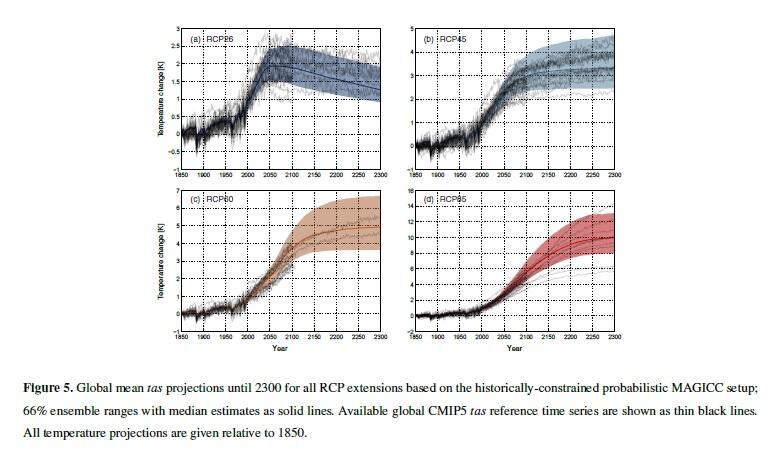Synthesizing long-term sea level rise projections – the MAGICC sea level model

Authors: Alexander Nauels, Malte Meinshausen, Matthias Mengel, Katja Lorbacher, and Tom M. L. Wigley
Abstract: Sea level rise is one of the major impacts of global warming; it will threaten coastal populations, infrastructure, and ecosystems around the globe in coming centuries. Well-constrained sea level projections are needed to estimate future losses from Sea Level Rise (SLR) and benefits of climate protection and adaptation. Process-based models that are designed to resolve the underlying physics of individual sea level drivers form the basis for state-of-the-art sea level projections. However, associated computational costs allow for only a small number of simulations based on selected scenarios that often vary for different sea level components. This approach does not sufficiently support sea level impact science and climate policy advice, which require a sea level projection methodology that is flexible with regard to the climate scenario yet comprehensive and bound to the physical constraints provided by process-based models. To fill this gap, we present a sea level model that emulates global mean long-term process-based model projections for all major sea level components. Thermal expansion estimates are calculated with the hemispheric upwelling-diffusion ocean component of the simple carbon cycle-climate model MAGICC, which has been updated and calibrated against CMIP5 ocean temperature profiles and thermal expansion data. Global glacier contributions are estimated based on a parameterization constrained by transient and equilibrium process-based projections. Sea level contribution estimates for Greenland and Antarctic ice sheets are derived from surface mass balance and solid ice discharge parameterizations reproducing current output from ice-sheet models. The land water storage component replicates the latest hydrological modeling results. For 2100, we project 0.38 m to 0.59 m (66 % range) total SLR based on the RCP2.6 scenario, 0.48 m to 0.68 m for RCP4.5, 0.48 m to 0.72 m for RCP6.0, and 0.67 m to 0.97 m for RCP8.5. These projections lie within the range of the latest IPCC SLR estimates. SLR projections for 2300 yield median responses of 0.97 m for RCP2.6, 1.66 m for RCP4.5, 2.32 m for RCP6.0, and 5.12 m for RCP8.5. The MAGICC sea level model provides a powerful and efficient platform for probabilistic uncertainty analyses of long-term SLR projections. It can be used as a tool to directly investigate the SLR implications of different mitigation pathways and may also serve as input for regional SLR assessments via component-wise sea level pattern scaling.
Citation: Nauels, A., Meinshausen, M., Mengel, M., Lorbacher, K., and Wigley, T. M. L.: Synthesizing long-term sea level rise projections – the MAGICC sea level model v2.0, Geosci. Model Dev., 10, 2495-2524, https://doi.org/10.5194/gmd-10-2495-2017, 2017.
The article is available here.